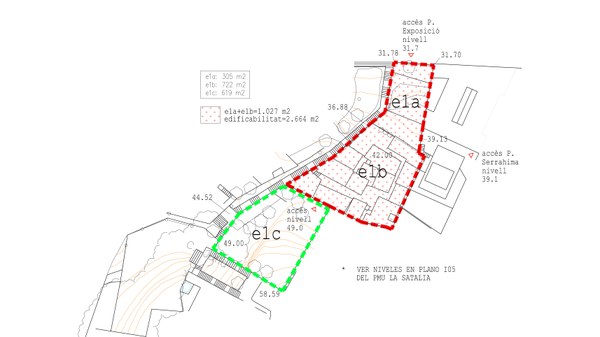Contemporary Collective Housing_New ways of living
Professors
Jaime Coll Lopez Pau Villalonga Munar
Classrooms
A-23, A-24
Timetable
Tuesday 17:00 - 20:00 Thursday 15:00 - 18:00
Introduction
Thematic Studios II, Contemporary Colective Housing_New Ways of Living, in its first edition will focus on the study of the new life in COMMUNITY. This course complements and specializes the basic course in collective housing of PIII-IV and is a possible prologue to the development of a PFC on housing. The accompanying seminar and the TFG will act as an introduction to research for those interested in postgraduate studies.
The last two crises, the economic crisis of 2008 and the sanitary crisis of 2020, have brought about a change of habits: a new culture of sharing (car, house exchange, crowd-funding), demographic changes (the traditional family is not the only way to live together), and the return to urban life (opposite the suburbs) and vice versa. [1] This change has led to a search for new typologies and programs in contemporary domestic architecture, which we can define as a search for an architecture of the collective that develops in levels: [1] the dwelling, with the apartments "cluster", where a number of apartments share living spaces; [2] the building sharing services, recovering the spaces of circulation as social spaces and above all the roofs as ecological spaces of leisure; [3] the relationship of the environment, whether natural or urban, with the neighbourhood, absorbing some uses or public facilities (passages, shops, workspaces. . . ).
The pandemic crisis has led to isolation due to the quarantine of the elderly, children, remote work, flight from the cities. . . the collective seemed to be a problem in a situation where we had to avoid contact and needed intimacy for remote connections. However, as JM Muntaner and Z Muxí point out in "Habitar el Virusceno", ". . . in the event that the pandemics recur, we should aim for more collective, communal and not so individual confinements or by coexistence units, more or less random. The mental health of all people, the sociability of boys and girls, as well as the affective and relational integrity of older people are affected by isolation. "
Healthy environments, both in the city and in the home; return to the countryside; affordable, dignified and healthy housing; enhancement of neighborhood life; housing as a living space; more flexible, adaptable and less hierarchical housing and less functionally conditioned, but with their own spaces for isolation; enhancement of community life; bioclimatic architecture in the face of the climate emergency; work at home, connectivity; own outdoor spaces such as rooms; the requalification of roofs. These are matters that appear as a condition in public housing tender documents and that private promotion transforms into advertising, often speculating and worsening spatial conditions. [2]
At the last Venice Architecture Biennale in 2021, Hashim Sarkis raised the question "How will we live Together?". In the section "As Emerging Communities", La Borda by the LaCol collective in Barcelona was presented as an example of a comprehensive community life project, from the design of the building, the management of the cooperative to the regulation of community life. We therefore started this series of Thematic Workshops taking advantage of Cristina Gamboa's experience in "building communities".

Share: